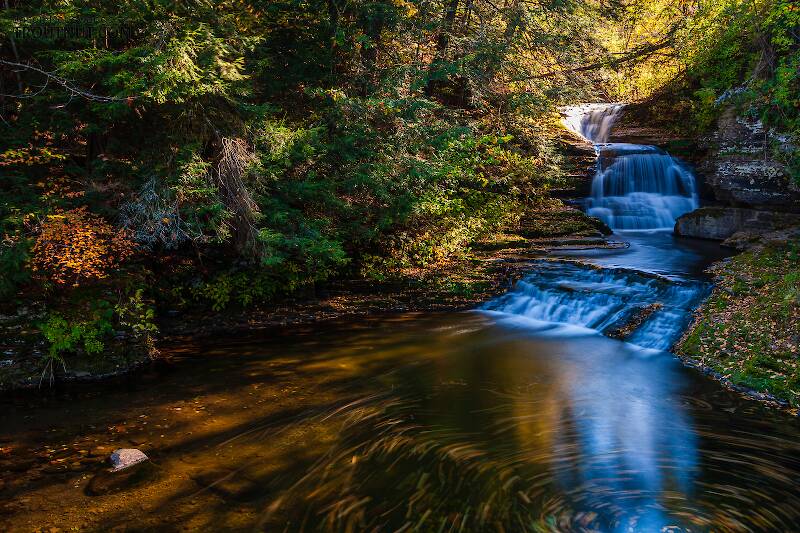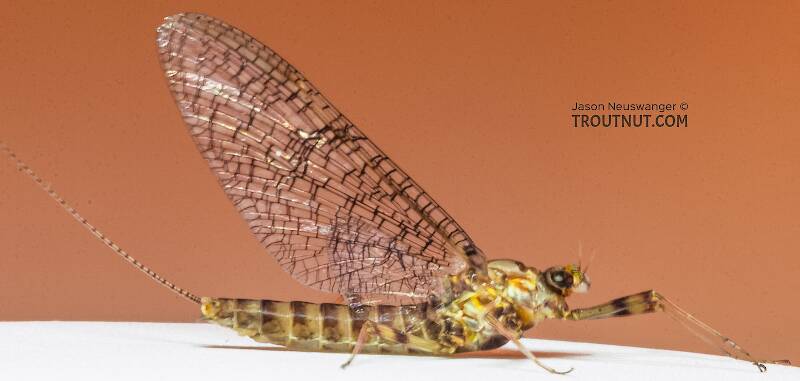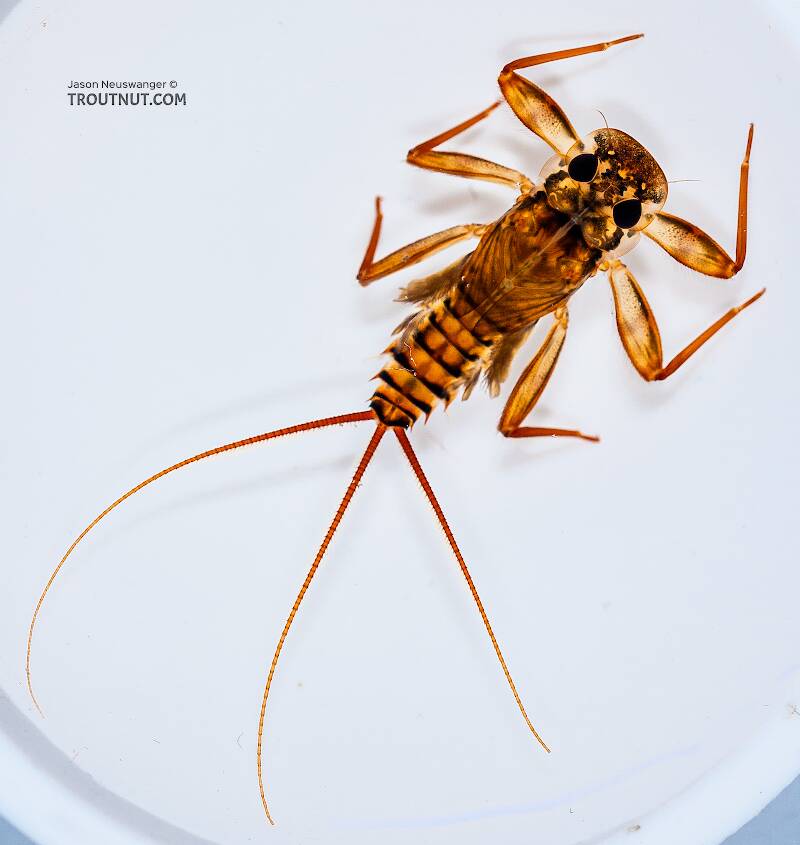
Blue-winged Olives
Baetis
Tiny Baetis mayflies are perhaps the most commonly encountered and imitated by anglers on all American trout streams due to their great abundance, widespread distribution, and trout-friendly emergence habits.
Featured on the forum

This one seems to tentatively key to Holocentropus, although I can't make out the anal spines in Couplet 7 of the Key to Genera of Polycentropodidae Larvae nor the dark bands in Couplet 4 of the Key to Genera of Polycentropodidae Larvae, making me wonder if I went wrong somewhere in keying it out. I don't see where that could have happened, though. It might also be that it's a very immature larva and doesn't possess all the identifying characteristics in the key yet. If Holocentropus is correct, then Holocentropus flavus and Holocentropus interruptus are the two likely possibilities based on range, but I was not able to find a description of their larvae.

Troutnut is a project started in 2003 by salmonid ecologist Jason "Troutnut" Neuswanger to help anglers and
fly tyers unabashedly embrace the entomological side of the sport. Learn more about Troutnut or
support the project for an enhanced experience here.
American March Browns
Like most common names,"American March Brown" can refer to more than one taxon. They're previewed below, along with 5 specimens. For more detail click through to the scientific names.
Mayfly Species Stenonema vicarium
These are often called American March Browns.
In the East and Midwest this is one of the most important hatches of the Spring. They are large flies which emerge sporadically, making for long days of good fishing.
This species contains the two classic Eastern hatches formerly known as Stenonema vicarium and Stenonema fuscum, the "March Brown" and "Gray Fox." Entomologists have discovered that these mayflies belong to the same species, but they still display differences in appearance which the trout notice easily. Anglers should be prepared to imitate both types.
This species contains the two classic Eastern hatches formerly known as Stenonema vicarium and Stenonema fuscum, the "March Brown" and "Gray Fox." Entomologists have discovered that these mayflies belong to the same species, but they still display differences in appearance which the trout notice easily. Anglers should be prepared to imitate both types.
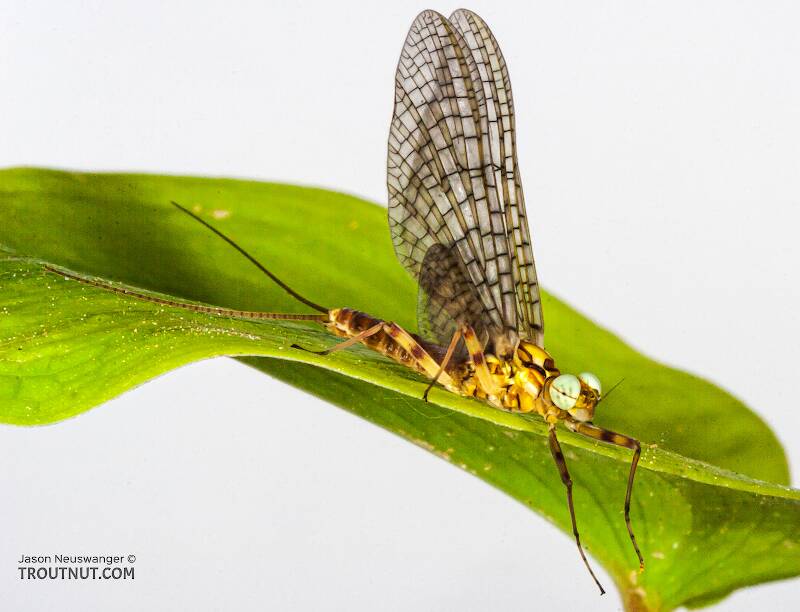
I collected this mayfly on the same trip as a female of the same species. After these photos it molted into a spinner. This is the form of Stenonema vicarium which anglers call the "Gray Fox."
See 17 more specimens...
Mayfly Species Litobrancha recurvata
These are very rarely called American March Browns.
Litobrancha recurvata is generally reported to be the largest North American species of mayfly in angler entomologies, though this understanding is being challenged by reports of Hexagenia limbata that may exceed 40mm in some locales. Regardless, it is certainly the largest mayfly in the region of its distribution. Sometimes it appears together with species of Hexagenia or Ephemera, but in other places it creates excellent action on its own.
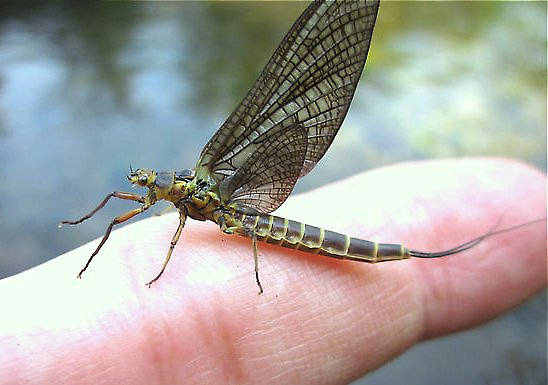
These photos were contributed by Spencer Vanderhoof.
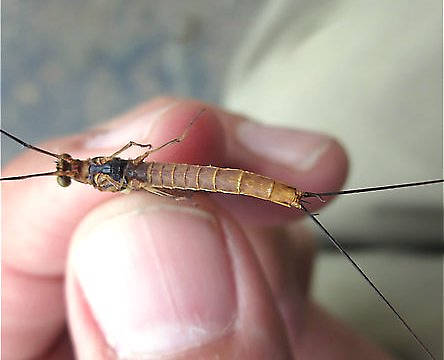
These photos were contributed by Spencer Vanderhoof.
See 1 more specimen...

